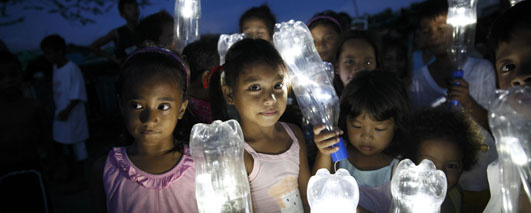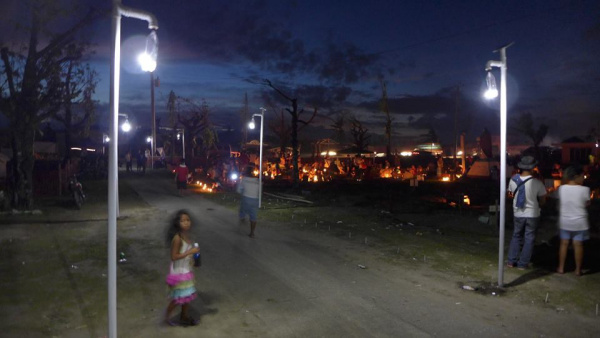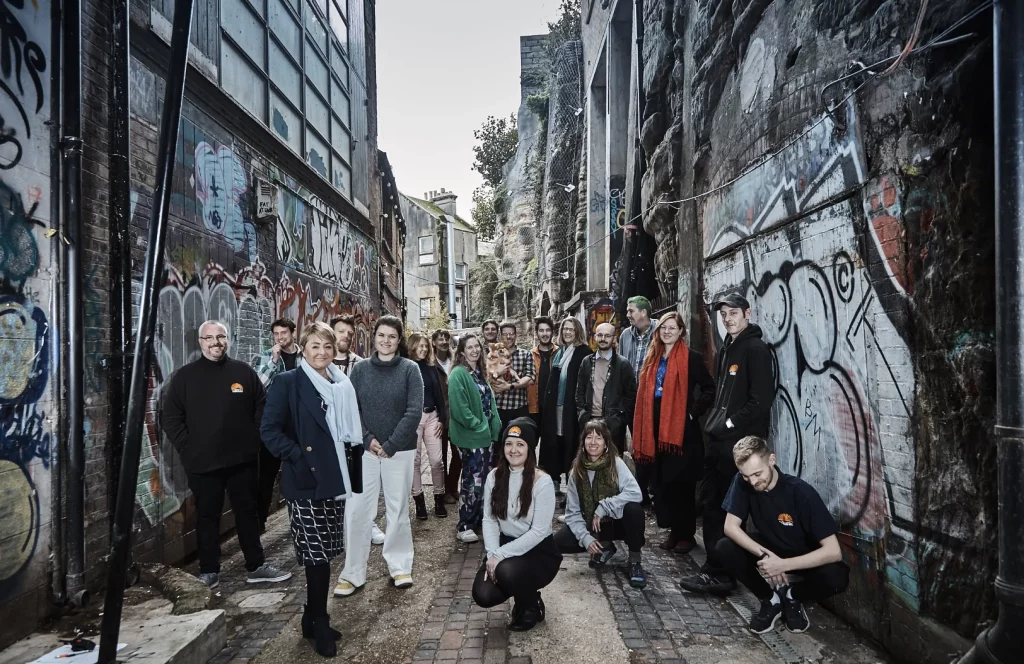In 2011, MyShelter Foundation created the Liter of Light programme which aims to provide poor communities in the Philippines and around the world with a cheap source of lighting that can be produced and distributed locally. Recycled plastic bottles filled with water and a bit of bleach are fitted into the roof to provide lighting during the day and can be upgraded with an LED bulb, micro-solar panels and a battery to provide a low cost night lighting system.
Liter of Light was conceived as an open-source, DIY programme that could easily be replicated by anyone around the world using readily available materials and basic carpentry/electronics skills.
Within 20 months of its inception, Liter of Light had become a global movement benefiting more than 150,000 households in the Philippines, and 350,000 homes in 15 countries.














